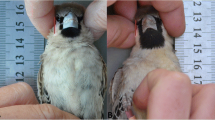Abstract
Two field experiments were used to examine how the relative benefits of cooperation influence within-group conflict in foundress associations of the paper wasp Polistes dominulus. P. dominulus foundresses can either nest alone or cooperate with other foundresses. We experimentally manipulated the relative benefits of co-foundress associations vs independent reproduction and tested the effect on aggressive within-group conflict. First, we examined aggression between alpha and beta co-foundresses before and after lower-ranking foundresses were removed. Removal of subordinates increases the relative contributions of the remaining subordinates to group reproductive output as there are fewer adults to care for the brood. Transactional models predict that group conflict over reproductive shares will increase as the relative benefits of grouping increase. As predicted, aggression between the co-foundresses significantly increased following subordinate removal. Second, we experimentally reduced ecological constraints on independent nesting by placing a previously orphaned, adoptable nest comb near the occupied nests. Providing an independent breeding opportunity is predicted to increase the benefits of independent reproduction relative to those of cooperating, thereby reducing group stability and aggression. As predicted, aggression between dominant and subordinate foundresses significantly decreased after the orphaned comb was presented. Therefore, group members sense variation in ecological constraints and relative productivity contributions and quickly modulate their behavior in response. Overall, these two experiments suggest that paper wasps behave as if within-group competition is limited by the threat of group dissolution such that stable groups where cooperation is strongly favored can withstand higher levels of conflict than unstable groups.


Similar content being viewed by others
References
Cant MA (2006) A tale of two theories: parent–offspring conflict and reproductive skew. Anim Behav 71:255–263
Cant MA, Johnstone RA (2000) Power struggles, dominance testing, and reproductive skew. Am Nat 155:406–417
Cant MA, Llop JB, Field J (2006) Individual variation in social aggression and the probability of inheritance: theory and a field test. Am Nat 167:837–852
Clutton-Brock TH, Parker GA (1995) Punishment in animal societies. Nature 373:209–216
Cronin A, Field J (2007) Social aggression in an age-dependent dominance hierarchy. Behaviour 144:753–765
Downing H, Jeanne R (1985) Communication of the social wasp P. fuscatus (Hymenoptera, Vespidae). Z Tierpsych 67:78–96
Gamboa GJ, Stump KA (1996) The timing of conflict and cooperation among cofoundresses of the social wasp Polistes fuscatus (Hymenoptera: Vespidae). Can J Zool 74:70–74
Johnstone RA (2000) Models of reproductive skew: a review and synthesis. Ethology 106:5–26
Liebert A, Starks PT (2006) Taming of the skew: transactional models fail to predict reproductive partitioning in the paper wasp Polistes dominulus. Anim Behav 71:913–923
Nonacs P, Reeve HK (1993) Opportunistic adoption of orphaned nests in paper wasps as an alternative reproductive strategy. Behav Processes 30:47–59
Nonacs P, Reeve HK (1995) The ecology of cooperation in wasps: causes and consequences of alternative reproductive decisions. Ecology 76:953–967
Nonacs P, Reeve HK, Starks PT (2004) Optimal reproductive-skew models fail to predict aggression in wasps. Proc R Soc B 271:811–817
Nonacs P, Liebert AE, Starks PT (2006) Transactional skew and assured fitness return models fail to predict patterns of cooperation in wasps. Am Nat 167:467–480
O’Donnell S (2001) Worker biting interactions and task performance in a swarm founding eusocial wasp (Polybia occidentalis, Hymenoptera: Vespidae). Behav Ecol 12:353–359
Queller DC, Zacchi F, Cervo R, Turillazzi S, Henshaw MT, Santorelli LA, Strassmann JE (2000) Unrelated helpers in a social insect. Nature 405:784–787
Ratnieks FLW, Foster KR, Wenseleers T (2006) Conflict resolution in insect societies. Annu Rev Entom 51:581–608
Reeve HK (1991) Polistes. In: Ross KG, Matthews RW (eds) The social biology of wasps. Comstock, Ithaca, pp 99–148
Reeve HK (2000) A transactional theory of within-group conflict. Am Nat 155:365–382
Reeve HK, Gamboa GJ (1987) Queen regulation of worker foraging in paper wasps a social feedback control system Polistes fuscatus Hymenoptera, Vespidae. Behaviour 102:147–167
Reeve HK, Keller L (2001) Tests of reproductive-skew models in social insects. Annu Rev Entom 46:347–385
Reeve HK, Nonacs P (1992) Social contracts in wasp societies. Nature 359:823–825
Reeve HK, Nonacs P (1997) Within-group aggression and the value of group members: theory and a field test with social wasps. Behav Ecol 8:75–82
Reeve HK, Ratnieks FLW (1993) Queen–queen conflicts in polygynous societies: mutual tolerance and reproductive skew. In: Keller L (ed) Queen number and sociality in insects. Oxford University Press, London, pp 45–85
Reeve HK, Shen SF (2006) A missing model in reproductive skew theory: the bordered tug-of-war. Proc Nat Acad USA 103:8430–8434
Reeve HK, Starks PT, Peters JM, Nonacs P (2000) Genetic support for the evolutionary theory of reproductive transactions in social wasps. Proc R Soc B 267:75–79
Sumana A, Starks PT (2004) The function of dart behaviour in the paper wasp, Polistes fuscatus. Naturwissenschaften 91:220–223
Tibbetts EA, Reeve HK (2000) Aggression and resource sharing among foundresses in the social wasp Polistes dominulus: testing transactional theories of conflict. Behav Ecol Sociobiol 48:344–352
Tibbetts EA, Reeve HK (2003) Benefits of foundress associations in the paper wasp Polistes dominulus: increased productivity and survival, but no assurance of fitness returns. Behav Ecol 14:510–514
West-Eberhard MJ (1969) The social biology of polistine wasps. Misc Publ Museum Zool Univ Mich 140:1–101
Acknowledgement
H.K.R. was supported by a Presidential Early Career Award for Scientists and Engineers. We thank D. Tarpy and several anonymous reviewers for helpful comments on the manuscript. All experiments complied with the laws of the USA.
Author information
Authors and Affiliations
Corresponding author
Rights and permissions
About this article
Cite this article
Tibbetts, E.A., Reeve, H.K. Two experimental tests of the relationship between group stability and aggressive conflict in Polistes wasps. Naturwissenschaften 95, 383–389 (2008). https://doi.org/10.1007/s00114-007-0336-x
Received:
Revised:
Accepted:
Published:
Issue Date:
DOI: https://doi.org/10.1007/s00114-007-0336-x




